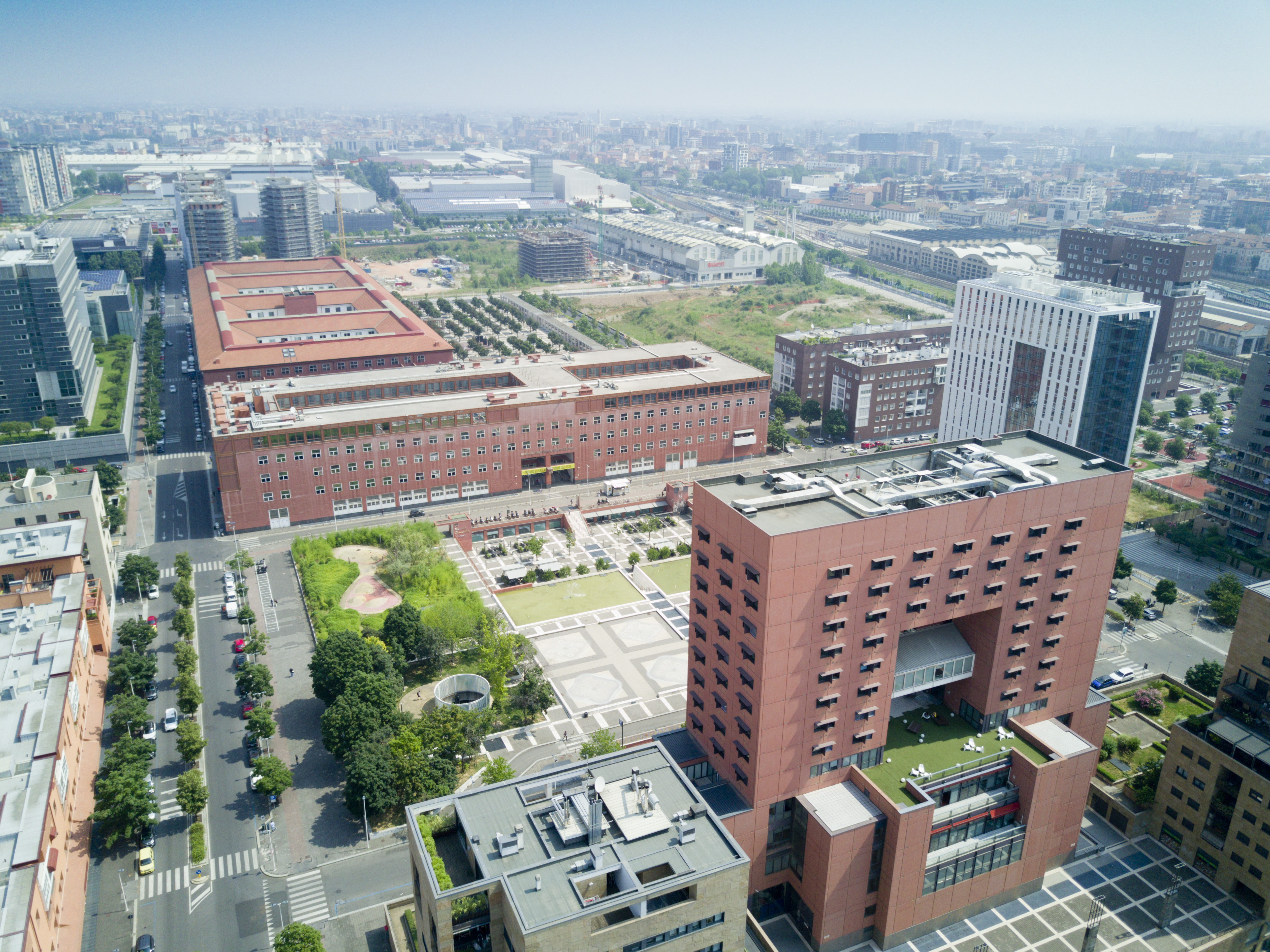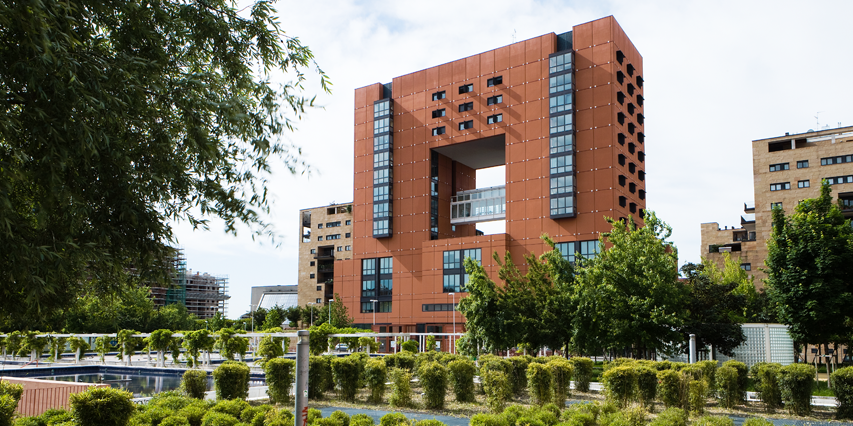Foundation and development
In the late 1980s, the academic bodies of the University of Milan set out a programme designed to obtain new premises to use for innovative research activities in strategic sectors and extend the teaching offering to fields of discipline that were absent from the local public institutions.
Through the 1991-93 three-year plan announced by Minister Ruberti, the Ministry of Universities and Scientific Research unveiled plans to split universities with over 40,000 alumni in order to better organise its multi-year development plans and bring about decongestion. The University of Milan – which was identified as one of the large universities in need of decongesting – was authorised to set up additional university hubs in the local urban area.
Under the 1993 Budget, Article 3 of Law 498 authorised social security bodies to purchase real estate to lease to universities and public research bodies, using up to 20% of funds available for 1993 and 1994.
In September 1993, the Municipality of Milan ruled that the Bicocca area would be the location of the new University of Milan hub.

The university’s first steps
The University of Milan’s Board of Directors decided to use the provision set out in Law 498 and applied to the Ministry of Education, Universities and Research to construct buildings to be used for teaching and research activities by the second university. The buildings would all be located in the Bicocca area, with the exception of the Faculty of Medicine and Surgery, which needed to be built next to the San Gerardo Hospital in Monza.
On the recommendation of an inter-ministerial commission composed of representatives of the Ministries of Universities and Scientific Research, the Treasury, Work and Social Security, the Ministry of Education, Universities and Research approved the university’s proposals and granted authorisation for construction. On 25 February 1997, the Ministry of Education, Universities and Research and the University of Milan signed a Memorandum of Understanding in which the parties agreed to initiate proceedings to split the university by establishing a second university.
Official foundation
On 10 June 1998, the second University of Milan was established by Ministerial Decree. A subsequent decree of 9 July 1998 appointed the Steering Committee, which would remain in place until the constitution of an Academic Senate and Board of Directors. A third Ministerial Decree on 12 March 1999 changed the name of the university to the University of Milano-Bicocca and altered the composition of the Steering Committee, expanding it from ten to 12 members, including the chairperson.
The Steering Committee remained in place until 30 October 1999, enacting the functions of the Academic Senate and Board of Directors. In the space of a year and a half, it was able to fulfil all requirements set out by the decree that established the university, as well as organising elections for the position of Rector and the Board of Directors.
On 1 November 1999, the current Academic Bodies were introduced.
On 12 October 2000, elections were announced for the Integrated Academic Senate, which engaged in detailed discussions before producing the university Statute, which was approved by Rectoral Decree 06243 on 11 June 2003 and published in the Official Gazette on 2 July 2003.

The Milan campus
The Bicocca campus is located in the Milanese district of the same name, which was once home to large industrial companies such as Pirelli and Breda. The new university became part of a large-scale redevelopment project launched around 1986 and coordinated by the architect Vittorio Gregotti. The 21 buildings occupied by the university are all located in the Bicocca district, with the exception of the Faculty of Medicine and Surgery, which is located next to the San Gerardo university hospital in Monza.
At the Bicocca Hub, redevelopment and expansion work was completed on Building U9, which is home to laboratories used for specific inter-departmental research activities as well as the university’s Multimedia Production Centre and an inter-faculty teaching sector.
Building U14 – located in the former Breda complex – was finalised, with a total surface area of 4500 square metres, and is home to the Department of Informatics, Systems and Communication. In front of this building, the university acquired a similar structure, together with some attached industrial warehouses, which need to be restructured in order to be used for university business as well as spin-off initiatives and start-ups, particularly those associated with biotechnology and pharmaceuticals companies who wish to open premises in the Bicocca area.
The Monza campus
The original plan for the Monza campus was to create a site for research and teaching activities for the Faculty of Medicine and Surgery with close links to the San Gerardo Hospital, which is a partner of the university. In order to accommodate significant increases in scientific and teaching activities, due in part to the creation of new technical/health degree courses, a new teaching building named Building U18 was constructed near to the Faculty of Medicine headquarters. Thanks to an agreement with the San Gerardo Hospital, the University of Milano-Bicocca is able to use a section of a building named Villa Serena, which is located on the hospital site, for its scientific activities.
As part of its collaboration with the hospital, the university used funding from the Ministry of Education, Universities and Research and the Region of Lombardy to build the Bio-imaging Centre, one of the university’s most important research initiatives in the field of health. The centre is used for the study of new diagnostic methods in the oncological, neurological and cardiovascular sectors. It has undertaken 3500 highly complex diagnostic tests in its two years of operation. The initiative also includes the Pet-TC pavilion, which will be joined by a bunker home to a cyclotron for the production of radiopharmaceuticals by 2009.
In order to guarantee effective management of the centre and its associated research activities, and to promote, organise and manage highly technological biomedical facilities – including on behalf of other hospitals – the university created the TECNOMED foundation.
In order to facilitate the process of technology transfer through collaboration with companies in the sector, the Region of Lombardy – which is keen to promote research in molecular biology, stem cells and nano-technology – contributed 48% of the funding necessary to build a new 10,600 square metre building in the Municipality of Vedano al Lambro, 68% of which will be used for laboratories.
The various initiatives supported by the Faculty of Medicine would benefit significantly from the availability of accommodation services for students and Italian and foreign researchers in the local area. To this end, the Municipal Administration of Monza made itself available to promote the construction of residences for students and researchers and to consider expanding existing structures for teaching and research in new sectors, particularly Economic Sciences, in order to add this to the already-active Organisational Sciences course.